Many of the leading automakers have announced public targets to ramp up electric vehicle development and production. While fewer than 1 percent of vehicles on the road today are electric, analysts project one-quarter of new sales will be electric vehicles by 2035, reports The New York Times. The article notes governments and automakers are focused on moving consumers away from gasoline-powered cars and trucks to “newer, cleaner electric vehicles as a key solution to climate change.”
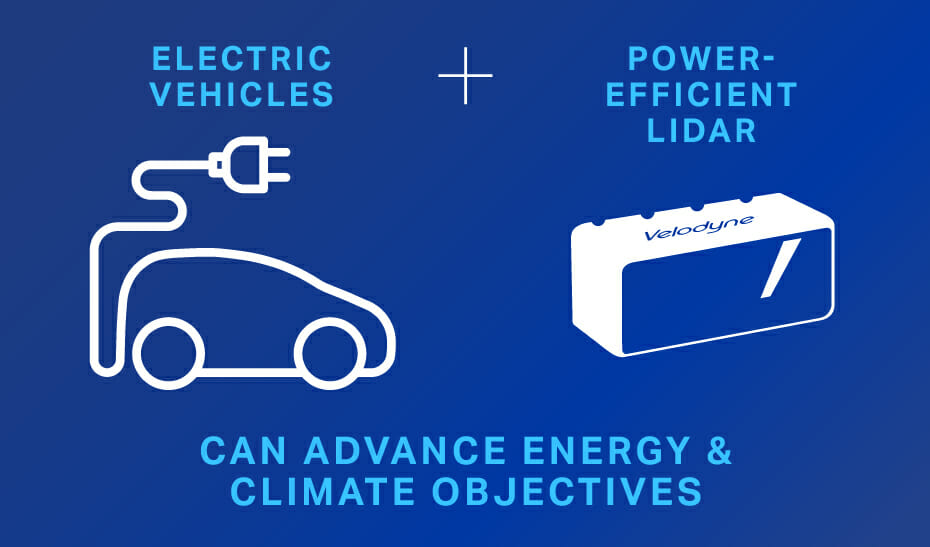
Electric vehicles (EV) equipped with advanced driver assistance systems (ADAS) and electric connected and autonomous vehicles (CAVs) have the potential to further advance energy and climate objectives. NHTSA stated it expects that automated vehicles can help smooth traffic flow and reduce traffic congestion. Annually, American urban commuters spend an estimated 8.8 billion hours in traffic, increasing fuel costs and vehicle emissions, as noted in our blog post “Electric Vehicles and Vehicle Automation: Driving a Cleaner, Safer Future.”
These factors make optimizing power efficiency in electric-powered automated vehicles essential to achieving energy and climate goals.
Lidar sensors are a critical technology enabling ADAS and CAVs. They create a precise map of ever-changing surroundings for a moving vehicle to safely navigate in a wide range of lighting and environmental conditions.
As automakers and new mobility companies assess lidar, they need to keep in mind that the difference in power consumption between lidar sensors can have major implications.
Let’s compare power consumption of two solid state lidar choices: Velodyne’s Velarray H800, which typically consumes 13 W, and a Luminar lidar, which typically consumes 25 W and, combined with its 30W back end unit, consumes up to 55 W. That’s a difference of up to 0.042 kW per vehicle for a single sensor configuration. The U.S. Department of Transportation’s Volpe Center noted that in 2015, Americans spent 84 billion hours driving. If even only half of the vehicles in operation that year were equipped with a single lidar sensor, utilizing the lower power unit would have resulted in a savings of 1.76 billion kWh. This amount of energy could power more than 165,000 average American households for a year.
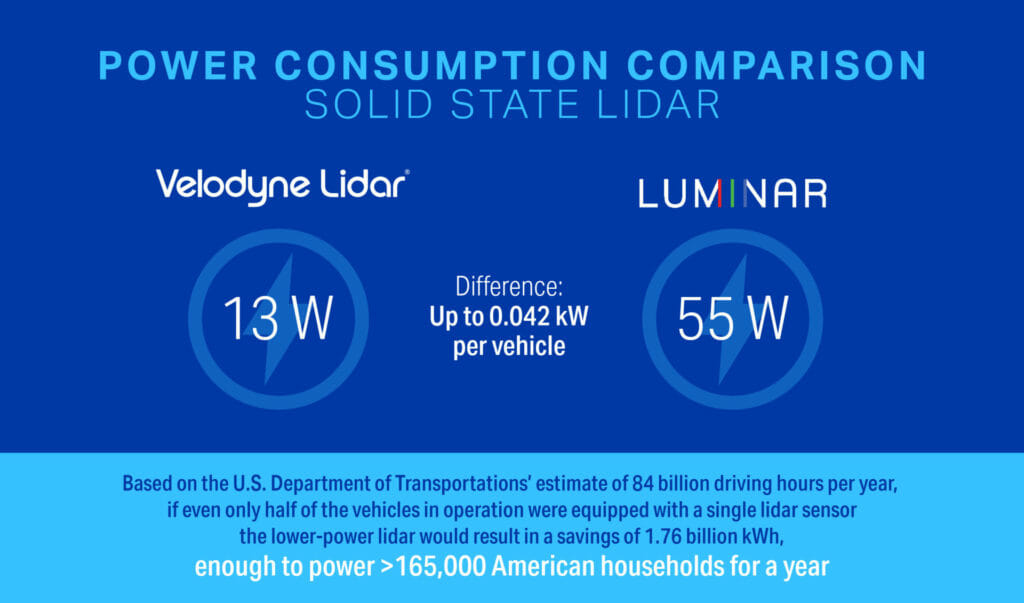
In evaluating the implications of lidar sensors on electric-power CAV efficiency, it is useful to consider power consumption within the context of other performance specifications.
For instance, ratios such as field of view (FOV) to power and range to power are particularly useful because they provide insight into the relative amount of power required to achieve similar performance in key specifications.
The chart below shows that the Velarray H800 is over 15% more efficient per square degree of coverage than Innoviz’s sensor. The Velarray M1600 is over 2.3 times more efficient, and the Velabit is over 10 times more efficient. That means, Velodyne sensors cover roughly 15% to 1000% more FOV per watt of power consumed.
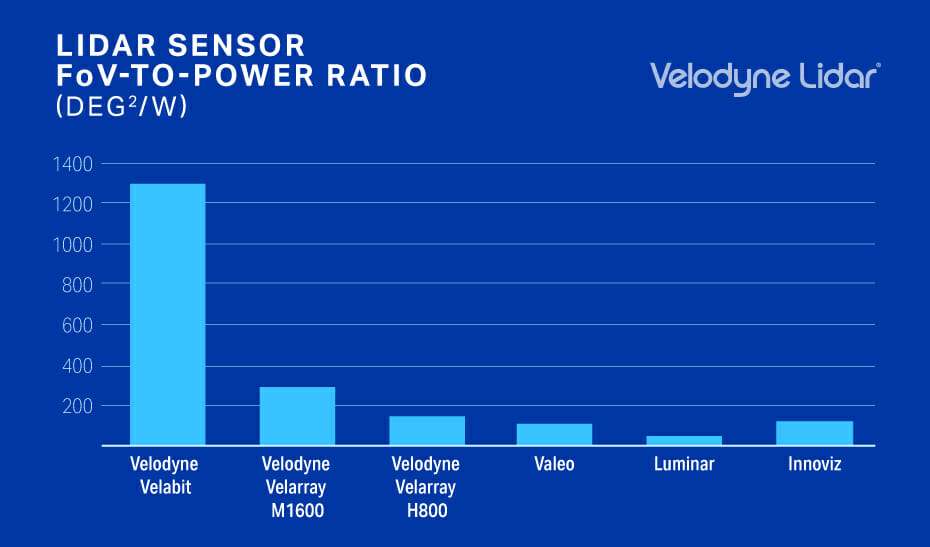
These figures deal with only Velodyne’s directional view sensors. A comparison with Velodyne’s surround view (360° horizontal FOV) sensors would be even more pronounced.
Next, while some developers continue to boast about their range, when one notes the power to range ratio it becomes clear that their claims are not as convincing. When one compares meters of range to Watts of power, the Velabit nearly doubles the performance and the Velarray H800 achieves more than 35% better results than the nearest competitor.
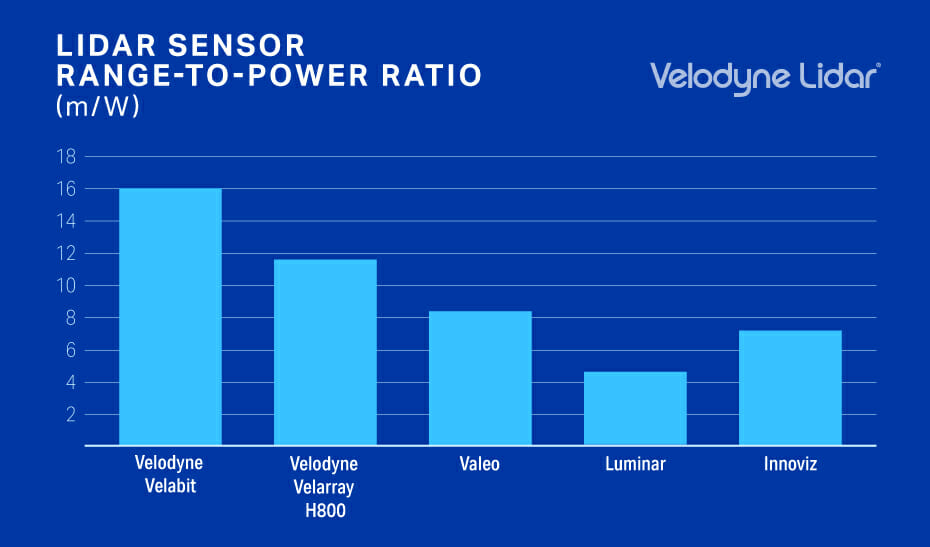
Automakers’ lidar technology choices will have critical implications across their EV brands. These decisions can significantly affect power consumption, vehicle range and performance, which will have a major impact on the efficiency of electric-powered vehicles.
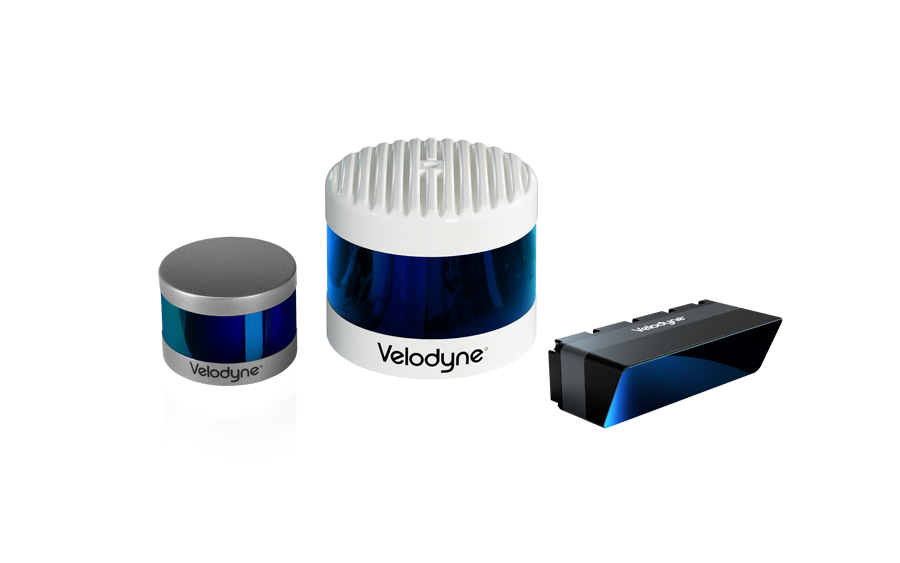
Velodyne Lidar (Nasdaq: VLDR, VLDRW) ushered in a new era of autonomous technology with the invention of real-time surround view lidar sensors. Velodyne, a global leader in lidar, is known for its broad portfolio of breakthrough lidar technologies. Velodyne’s revolutionary sensor and software solutions provide flexibility, quality and performance to meet the needs of a wide range of industries, including robotics, industrial, intelligent infrastructure, autonomous vehicles and advanced driver assistance systems (ADAS). Through continuous innovation, Velodyne strives to transform lives and communities by advancing safer mobility for all.